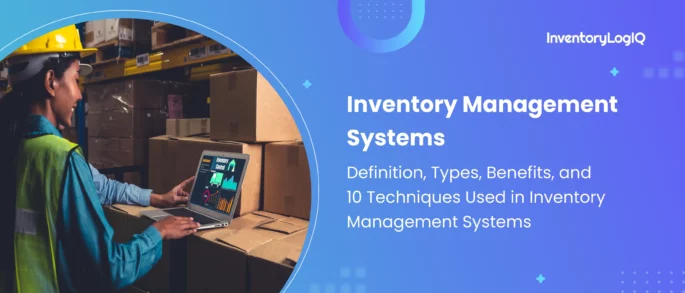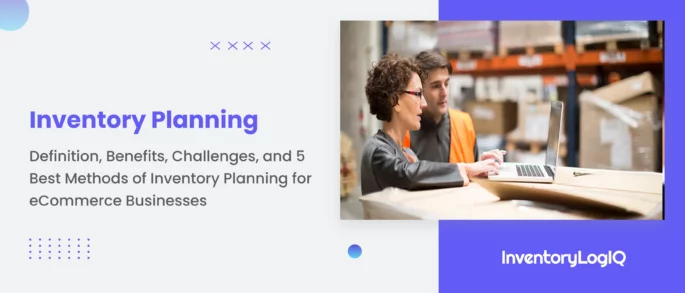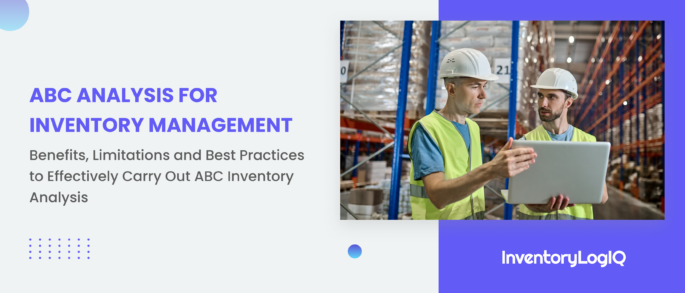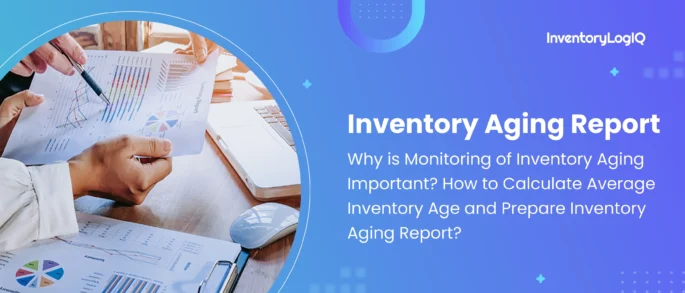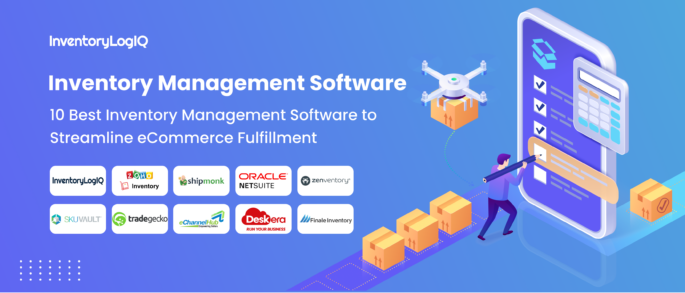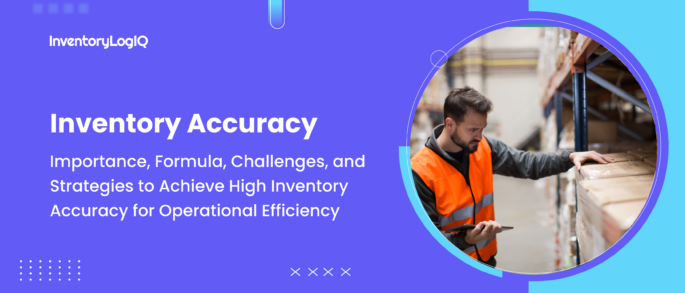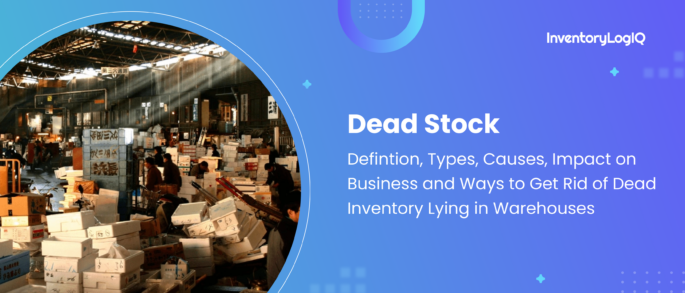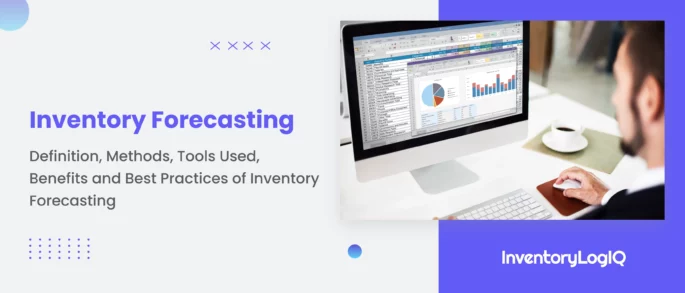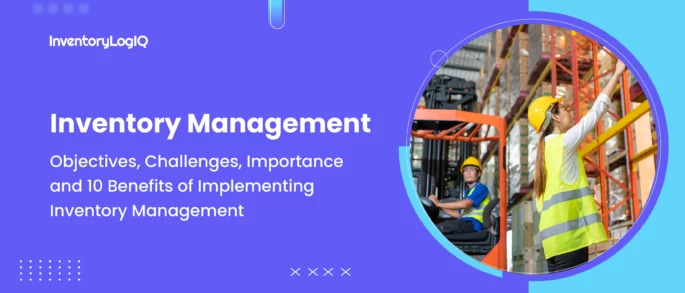Blogs
![ERP Inventory Management: Features, Importance and 10 Indicators When Your Business Requires an ERP Inventory System [2023]](https://inventorylogiq.com/wp-content/uploads/2022/09/Frame-295-scaled.webp)
ERP Inventory Management: Features, Importance and 10 Indicators When Your Business Requires an ERP Inventory System [2023]
Businesses in the wholesale sector that have mastered the art of inventory management have long held the top positions. This is because inventory management knowledge reduces waste, saves time and resources, and ultimately boosts profit margins. To manage inventory, data is essential. Furthermore, to maximise profit, it is necessary to have accurate data, regardless of the process involved, including purchasing, shipping, warehousing, customer satisfaction, or any other activity. Inventory management has become more straightforward in modern times. Thanks to ERP inventory management systems, the business owner may now easily access a large amount of the necessary data. ERP inventory management gives businesses a competitive advantage. These ERP inventory management solutions are used to manage tasks related to inventory, finances, and other elements of enterprises. Accurate order fulfilment is not enough to differentiate oneself from the competition. For example, customers blame retailers for delayed delivery 41% of the time. Therefore, whether your company uses an internal staff or a third party for delivery, it is your brand's responsibility to ensure that customers receive their goods on schedule. In addition, your company may improve last-mile delivery, increase warehousing efficiency, and inventory optimization by implementing and utilising an ERP inventory management solution. This article discusses the importance of ERP inventory systems and the qualities to look for in an ERP inventory management system. By the end of the article, you will be able to determine when your business needs one. What is ERP Inventory Management? Enterprise resource planning (ERP) is the process of centralising and integrating several essential corporate tools and activities. A comprehensive approach to business is intended to be provided by this integration and centralization, where one workflow informs another. For instance, companies that combine their inventory forecasting and ordering processes can more efficiently manage their inventory levels. Businesses may manage their business activities from a single platform using ERP inventory management systems. The management of inventory, finances, operations, planning, and logistics are typically addressed. ERP solutions enable firms to manage complicated inventory procedures across the entire organisation using real-time data. While all ERP modules are housed on the same platform, each function operates as a standalone piece of software. This has the advantage of allowing data to be shared between modules, which will facilitate rapid and straightforward calculations with greater inventory accuracy. Small enterprises can get away with only one or two standalone software products. However, this quickly turns into a management nightmare for many larger firms. Businesses can invest in a single platform rather than numerous distinct software packages to manage their inventories. This additional efficiency and synchrony are also beneficial to many medium-to-large-sized companies. What are the prominent features of an ERP Inventory Management System? Features of ERP systems are designed to enhance business operations. An ERP inventory management system's assistance with order quantity calculations is one of its core capabilities. This aids companies in timely and cost-effective planning and order replenishment, preventing stockouts and other expensive effects of improper inventory control. Your stock levels, real-time inventory, and reorder points may all be viewed, calculated, and automated with the aid of an ERP. For instance, when data indicates that demand for a particular SKU has risen to a specific specified level, inventory products might be automatically ordered. Similarly, an ERP system might detect and resolve problems with a surplus or automatically place sales orders when purchasing costs are low. The capabilities offered by each ERP inventory management system will differ slightly. However, the most common features include: Automation ERPs automate time-consuming, repetitive business operations, such as data entry, to save time and lower errors. This works because users place information into an ERP system accessible throughout the enterprise. And those data power very effective, clever, automated procedures. As a result, when automation performs at its peak, a significant amount of time and money is saved. To code and create automation rules in an ERP system, however, you almost certainly require a system administrator. A Solitary System Two of an ERP's primary functions are integrating processes across departments and eliminating needless data silos. ERPs assemble information from several internal departments to produce a holistic view of operational, financial, business, and customer data. Accurate reporting, insights, and superior company decision-making are all supported by this business intelligence. Management and Data Reporting ERP systems mobilise data and offer valuable insights to improve decision-making. Real-time reporting that is incredibly accurate enables operational improvement, cost reductions, and enhanced services all around. Data will be compiled by an ERP and shown in charts, graphs, and reports. Supply chain Administration The management of the supply chain is a crucial feature of ERP systems. This includes managing logistics and distribution as well as tracking demand and inventories. In addition, ERPs gather information about the supply chain to recommend optimal transfer and purchase orders. Accounting and Financial Administration Like standard accounting software, an ERP will provide financial data tracking and analysis for all business accounts, budgeting, and inventory forecasting needs. Additionally, specific systems might provide revenue recognition, multi-currency support, and tax and asset management. An ERP is made to assist organisations in planning, spending, and decision-making that is organised and optimised. Customer Relationship Management (CRM) To include customer data in reporting and decision-making, many ERP systems link with CRMs. For example, to build a prospect-reachable database, ERPs will mobilise information such as contact details, prospect status, serial numbers, and order histories. The marketing and sales teams may then focus on leads that are likely to convert, optimise lead times, and develop more decisive campaigns. Manufacturing Administration With the aid of product planning, procuring raw materials, and production monitoring, ERP systems assist firms in increasing the productivity of their manufacturing processes. To assist in managing your inventory planning processes, an ERP will gather and store precise data on your bill of materials, shop-floor controls, distribution planning, product tracking, and more. Why is ERP Inventory System Important For eCommerce Businesses in 2023? Source ERP inventory management helps firms run and streamline their operations productively and economically. Businesses can manage finances, operations, and inventory all in one location with the help of ERP inventory management, which lowers the chance of errors and increases productivity. Additionally, by leveraging exact real-time data, ERP helps business executives make strategic decisions. Using ERP inventory management solutions within a firm has numerous advantages, some of which are listed below. Planning Inventory Replenishments is Simplified When ERP inventory management solutions are used, managing inventory is a million times simpler. In addition, business owners can precisely plan replenishment orders using such inventory management software. Systems for managing inventory assist in classifying components, making ordering the correct quantity at the right time simpler. Fewer transactions are needed, and inventory management is improved and made more precise. Regulation of Surplus Inventory Business owners may easily access any excess inventory with the help of ERP inventory management. It provides a 360-degree perspective of the complete inventory and explains the precise reason for the overstock. Additionally, this speedy discovery of the excess prompts the business owner to act with greater urgency and determination, saving precious resources that could be used to purchase inventory. Increased Effectiveness One of its key benefits is that an ERP inventory management system increases efficiency at every stage. Utilizing a single, centralised system allows for automation and avoids double handling, leading to increased productivity. Increased production and earnings result from increased efficiency. Reduced Costs Every business owner knows the importance of reducing costs to boost profit margins. Systems for managing inventory part of ERP make sure to do that. Such technologies not only minimise human work but also eliminate the requirement for business owners to buy or invest in different resources or systems because they combine so many services into a single solution. Accurate Data Gathering and Reporting ERP systems ensure that the correct data is always available to business owners on time. ERP inventory management solutions enable quality data collection with real-time updates on consumers, available stock, and pending orders. Additionally, customised inventory records and sales data can be produced by ERP systems, enabling a business owner to analyse operational performance and plan for expansion continuously. Enables Business Growth ERP inventory management solutions were built primarily to maximise earnings while minimising costs. Automating almost every aspect of inventory management reduces the need for manual labour. ERP inventory management solutions offer the ideal setting for business owners to advance their enterprises, whether it is to expand locally or worldwide. Typical Inventory Issues That an ERP Inventory System Can Address in 2023 A business may experience issues if inventory management is not practised. However, the most typical inventory problems can be resolved by switching to an Enterprise Resource Planning (ERP) system. By using an ERP inventory system, you can prevent the following situations: Overstock Inventory It is advisable to stay away from carrying too much inventory while selling seasonal goods. A surplus of inventory can raise costs and decrease liquidity. However, you can experience an inventory deficit if your projection is excessively pessimistic. You can quickly evaluate historical sales data and past seasonal trends with an ERP inventory system, which can help your organisation establish realistic safety margins. Inventory Deficits (Out-of-Stock) Both excess and shortages of inventory are expensive. For instance, insufficient stock during peak sales can hurt your company if your products have a high-profit margin in a crowded market. The "par levels" (also known as minimum inventory thresholds) that can be set by ERP inventory software for each product can be adjusted year-round. If a product's inventory falls below the predetermined par level, the inventory management software promptly sends out a request for further orders. A purchase request can be sent out automatically using an ERP inventory management system in conjunction with the appropriate automation software. Dead Stock For the uninitiated, expired products used once and then forgotten about are referred to as dead stock or on-hand. Dead stock is detrimental since it costs money on two different fronts. The initial cost of the things you sold cannot be recovered.Every day a product is left unused, the prices of storage (warehousing) rise. An ERP inventory system can assist in keeping track of all information pertaining to the product's acquisition, production, expiration, and insolvency. For example, when equities expire, the system can send alerts to inform users. Inventory Movement Knowing when to place a new order or make things again is made more accessible by inventory turnover. It takes a long time to calculate your inventory manually. 46% of SMBs track their inventory manually or don't track it. During this process, it's important to monitor: Count cycleOrder cycleDelivery cycle In addition to requiring a long time, human error is highly probable. Your business can continue to function normally even as you order and maintain products if you can automate this process. This process will be simpler to accomplish if ERP consulting is used. Things To Look for In A ERP Inventory Management System For retailers, there isn't a universal inventory system. However, all firms should consider a few factors while shopping for an ERP inventory management platform. A company must first hunt for a tool whose price won't exceed its spending limit. For improved accessibility, they should also search for a cloud-based solution with a user-friendly user interface. It's also crucial to look into the software vendor's support choices to ensure that assistance is offered in case of a system malfunction. Finally, a competent ERP application will automate order management, warehousing, and inventory management processes. Basic requirements for ERP inventory systems include: Multiple-channel Inventory Control Retailers employ multi-channel inventory management to track merchandise sales distributed throughout numerous outlets and stored in various locations. This can apply to traditional retail, e-commerce, and wholesale. Retailers will benefit from software with multi-inventory management functionality in several ways, including: Managers can quickly save time by finding the required information by providing centralised data about purchase orders and inventory levels across all sales channels and warehouse locations.It is possible to improve inventory forecasting by identifying inventory needs, establishing reorder points for replenishment, and avoiding issues like low stock levels or full stockouts.Making it simple for customers to shop for products where they choose, whether on your website or at your physical store, will improve the customer experience. You May Also Read: What is Distributed Inventory System? Stock Monitoring and Warehousing Inventory available on multiple channels increases sales reach. However, if shops can't locate the goods they require to satisfy orders, they won't be able to meet demand or increase earnings. Due to this, effective warehousing techniques are essential for all businesses, whether giant corporations with numerous warehouses or small companies with a single storage facility. By optimising procedures, an ERP with a warehouse management system assists businesses in avoiding issues like delayed order fulfilment or missing product: Warehouse design maximises retailers' storage by instructing warehouse managers to arrange inventory and store popular goods in convenient locations that make it easier to fill orders.Finding things in the warehouse and packaging them for transport and delivery is easier by picking and packing.Receiving and storing materials make it easier to receive new shipments of goods and to arrange items in suitable locations inside the warehouse. Managing Invoices and Purchase Orders When consumers decide what they want to acquire, effective purchase order management starts and ends with that decision. This procedure can be streamlined with a robust ERP system with invoicing capabilities and a point of sale (POS) connection. It automatically produces invoices and emails them to clients when they place orders. In addition, by combining billing and order management, the ERP may be updated automatically, directing the warehouse staff to start processing the order. When Do You Need an ERP Inventory Management System? Here are ten indicators that your business may be ready for an ERP system; if any of these apply to your operation, get ahead of the game and begin your search. Increased Customer Complaints You don't want further client complaints. An increase in complaints is frequently a sign that orders are not being processed effectively or that the quality of the items is declining, and good customer service is essential. An ERP system instantly provides the data your customer service staff needs to help solve problems. Inability to Deliver on Schedule Delivering deadlines are missed, including a lack of visibility into capacity, inappropriate or ineffective scheduling of resources (including people and machinery), and improper supply chain management. An ERP system will provide a finite scheduler and capacity planner, ensuring everyone knows what is needed and when. So if your business frequently misses deadlines, you are likely ready for one. Product Quality is Deteriorating A drop in quality and a rise in returns could be signs of a communication issue inside the company, an inefficient workflow, subpar supplies, or inaccurate paperwork. An ERP system should offer traceability for a company to pinpoint the underlying causes of quality issues, create preventative measures, and engage in continuous improvement. Unawareness of Your Potential The scheduling system is strained when too many operations need to be manually calculated. An inventory planning and scheduling tool facilitates effective resource use and should consider real jobs, projected staff absences, and scheduled maintenance. In addition, your sales staff will be able to securely sell unused short-term capacity when they are aware of your genuine spare capacity, reducing downtime and increasing profitability. Producing Incorrect Quotes or Estimates Unexpected increases in labour and material costs may go unnoticed in a manufacturing organisation without an accurate data flow, rendering a work unprofitable. As an alternative, you will be less competitive if you overquote. For you to know precisely what your margins are when a quote is sent out, an ERP system makes sure that the most recent expenses are used in estimates. No Stock Visibility Gaining orders frequently depends on knowing what stock is available to promise. Delays happen when there isn't centralised exact knowledge of what's in the warehouse. In addition, it is a waste of time to go out to the warehouse to check on stock because inventory is always available with an ERP system. Delay in Procurement The information that purchasing departments receive determines how effective they are. For example, they will frequently miss the delivery deadline if they don't know when the material is needed. On the other hand, ordering supplies too early can result in an extended period of time where cash flow is held in stock. Your procurement staff can place just-in-time orders for the material since an ERP system informs them of what is needed and when. Unaware of Your Business Productivity It is crucial to have reliable historical data when dealing with narrow margins to prevent losing money on fiercely competitive jobs. This data is accurate and readily available with an ERP system, allowing management to identify areas inside the business where costs or turnaround times may be higher than anticipated. Excess of Spreadsheets Spreadsheets have long served as the information storage method for many manufacturing organisations. Where there were previously only a few spreadsheets, as a firm expands, the number of spreadsheets in use increases as well, with various departments utilising their own. Using several spreadsheets is a significant sign that your business is prepared for an ERP system. These spreadsheets, and frequently other systems as well, are used to gather and retain valuable data. Still, because they cannot be thoroughly analysed, it becomes progressively challenging to produce any useful information from them. With an ERP system, such data is compiled and kept in a single system, making evaluation considerably simpler. Business Unable to Expand Nobody has the time or energy to concentrate on the firm's strategic development since everyone is too busy chasing information and finishing daily responsibilities. Even the idea of trying to discover answers among that data is daunting, so let's not think about any more information! But it becomes much simpler to prepare for the future when an ERP system is in place to control the information, generate insightful reports, automate business operations, and lessen duplication. Conclusion The industry's approach to inventory management has undergone a revolution thanks to ERP inventory management. ERP inventory management is also very efficient and cost-effective. It is currently utilised by businesses to simplify inventory management. They support decision-making processes and are accessible across a variety of platforms. ERP inventory management reduces errors in addition to increasing earnings and efficiency. Businesses that have chosen to use this technology benefit, while those still resisting changes are losing behind. Inventory LogIQ is one such ERP inventory system to improve upon your supply chain from three angles: reduce your excess stock while maintaining availability at speed for your customers by sharing the following actionable insights: Red List (to avoid out-of-stock situations)The list that highlights SKUs (bestsellers) that are likely to go out of stock soon and need replenishment taking each of the FCs/warehouses into considerationThe list that recommends a minimum order quantity (MOQ) for ordering at the Location / SKU levelBlue List (to avoid excess inventory pileups)The list of SKUs to focus on for liquidation, where you are holding excess inventoryReal-time BI tool on your key Inventory health metrics and SKU classificationReal-time view on the right Network design to meet your Regional Utilization goals ERP Inventory Management FAQs (Frequently Asked Questions) What is ERP in inventory management?A system called enterprise resource planning (ERP) inventory management enables companies to handle all facets of their operations, including finance, planning, logistics, and inventory, on a single platform. What distinguishes inventory management from ERP?ERP is a general word that covers how businesses connect various workflows and operations. A company's techniques for managing inventory, such as product tracking, tagging, and forecasting, are referred to as inventory management. ERP can be used for other business operations or only inventory management. How might inventory management be aided by ERP software?The tools firms employ to streamline numerous inventory activities are centralised by ERP software. Making it simpler for managers to find the required tools increases efficiency and saves them time. For instance, forecasting aids retailers in avoiding inventory issues like stockouts and shortages. Retailers can shorten lead times by adopting features like inventory management and warehousing.
September 14, 2022
